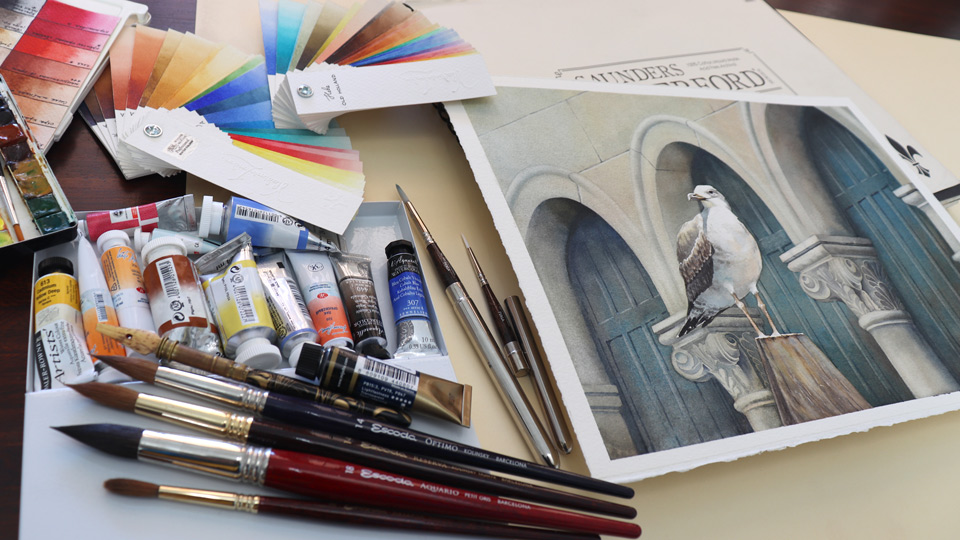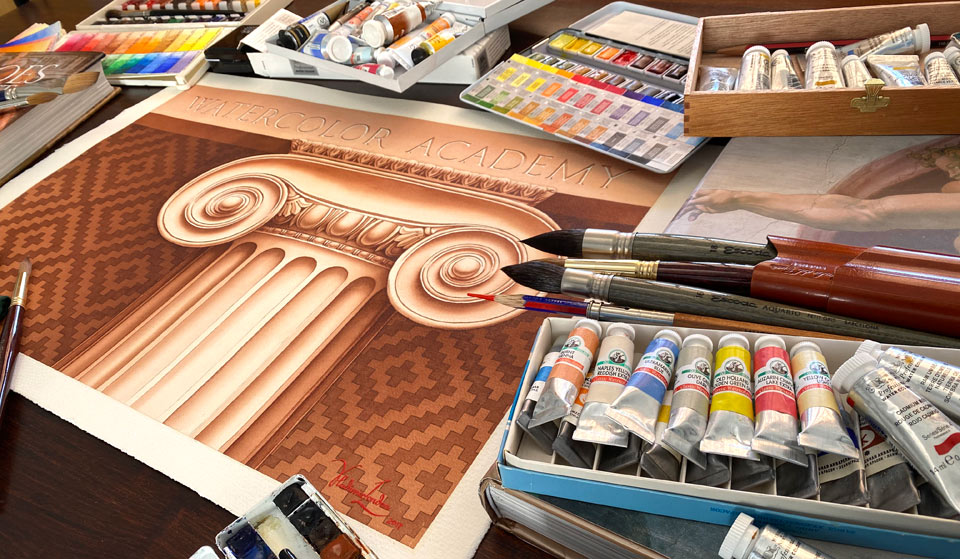Finishing Steps in Watercolor Painting
Article by Vladimir London, Watercolor Academy tutor
The finishing steps in watercolor are as important as the whole painting process beforehand. This can make or break the final look of an artwork.
There is one good rule here: it is better to stop just before you think the artwork is finished, rather than overwork it. Leaving it completed but "unfinished" will give the viewer room to imagine the incomplete bits and perceive the picture as more interesting and appealing.
Another "golden rule" is that if you are in doubt should you do some finishing touches, skip them. So many watercolor artworks were ruined by "good thinking" and "a few more brushstrokes wouldn't do any harm".
With this in mind, let's discuss what the finishing steps in watercolor are and how to use them to the best advantage.
There are two main ways to finish an artwork:
- Work on the details
- Unify the separate areas
These two steps can be done in cycles. After defining the details, the artist can unify big areas and then again go back to the details. This sequence can continue until the artwork is completed.
A good watercolor artwork has the details painted in a "fresh" and confident manner. The color, direction, and character of every brushstroke contributes to the overall picture look.
The details in small-scale artworks can be done by retouching: painting with short strokes or dots with a small brush. Such a technique can produce very soft gradations of tones and colors. Retouching is done with the wet-on-dry technique.
To keep multiple details in a similar color or tone scheme, multicolored areas can be unified by applying transparent washes of the required color-tints over bigger areas of an artwork. This is where glazing painting method becomes handy.
For example, in landscape painting, you may need to generalize the background, uniting various objects with a cooler bluish tint. In such case, an artwork can be finished with several glazing layers. Keep in mind that with every layer the artwork will get darker so the painting steps must be planned accordingly.
Sometimes the sharp contours of details need to be softened up without deepening the tonal values. In such cases, a wash of clean water can be applied with a wide, flat, soft brush, covering the required area of painting.
Gradated washes are also good for gradual change in tonal value or color. Such unifying gradations can go from top to bottom, from center to edges, or from background to foreground, etc.
Finishing an artwork does not always go well, so I will write a few words on how to deal with possible mistakes in watercolor.
Painting over mistakes can sometimes fix them. Most often, the failed parts of an artwork or even the entire picture needs to be washed out. This is not always possible depending on the quality of paper and kinds of paint used. Scraping dry paint is a radical treatment which doesn't work every time.
If the artwork goes beyond the point of recovery, there are still some options left. You can go from a watercolor to a mixed media, continuing with body colors or gouache, use ink on top, or treat it as a preparatory under-painting for a pastel drawing, which is made over a dry surface. Otherwise, there is always the reverse side of the sheet which you can use for a second attempt or preparatory sketches.
Just accept that not every watercolor artwork goes exactly as intended or planned. Don't be discouraged by it. Even the best fine artists do not get perfect results every time. The best attitude you can employ is to learn from your experience and persist in improving your art skills.
To learn how to paint in watercolor, enroll now
Watercolor Academy Online Course
A self-study, self-paced course where you can learn how to paint in watercolor by watching video lessons and doing assignments
- Unlimited access to 80 watercolor painting video lessons
- Lifetime membership without deadlines
- Unlimited support from the Academy tutors
- Constructive critique of your artworks
- Member access to the Academy's Art community
- Place in the Academy's Students Gallery
- Exclusive members-only newsletter and bonuses
- Watercolor Academy Diploma of Excellence in your name
One-time payment - Lifetime membership
$297 USD
ENROLL NOW
Personal Tutoring online + Online Course
One-to-one, unlimited and custom-tailored to your skills and needs Personal Tutoring by the Watercolor Academy teachers
- Everything in Online Course, plus:
- Dedicated team of art tutors
- Assessment of your current level of art skills
- Personalized curriculum tailored to your skills and goals
- Up to 100 art tasks with by-task assessment
- Unlimited one-to-one personal coaching with detailed per-task instructions and feedback
- Artwork critiques and results-oriented guidance
One-time payment - Lifetime membership
$997 USD
ENROLL NOW






